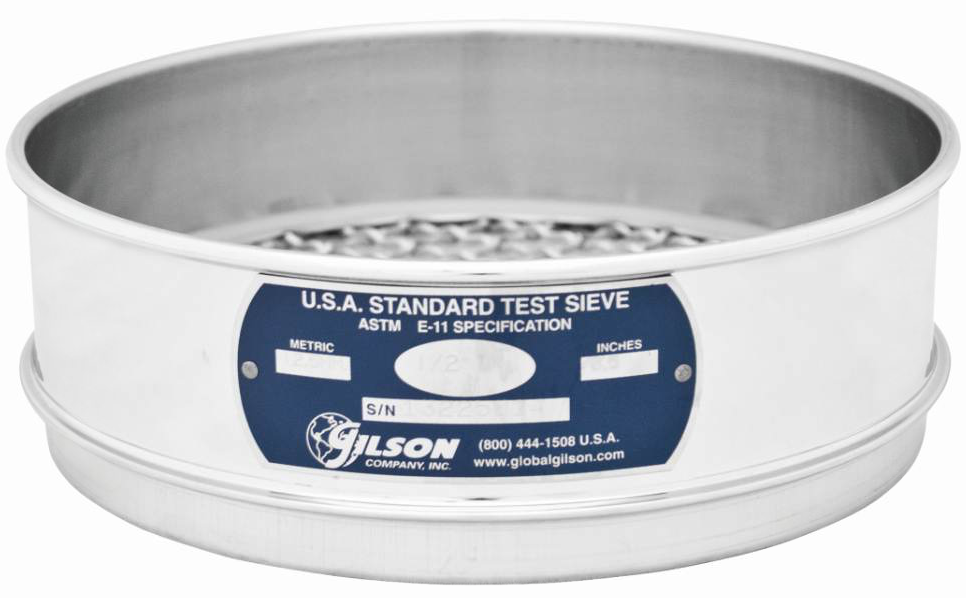How to Clean Test Sieves Properly
BY Jim Bibler

To get optimal use out of your test sieves, you need to ensure you’re properly storing and cleaning them. Test sieves are precision instruments. If handles with care, they will last longer and retain their accuracy.
Before You Start
- Clean new sieves using mild soap and warm water to remove grease and oil prior to conducting any tests.
- Store test sieves in clean, dry conditions. A vertical rack with separate compartments prevents damage during storage and keeps sieves organized for easy access.
- Use caution if you’re using an oven to dry sieves. Excessive heat may soften the solder or epoxies used in assembly, and could cause the tensioned cloth to pull away from the frame.
- Use brushes for cleaning.
Coarser sieves larger than #4, or 4.75 mm, will require a wire brush for efficient cleaning.
Sieves that are #20, or 75um or finer, require a soft bristle brush to avoid damaging the mesh.
Sizes in between are best cleaned with a medium/stiff bristle brush.
Be sure you use a light touch on finer mesh sizes so you don’t damage the cloth.
How to Clean
- Brush the underside of the wire cloth in a circular motion, exerting light pressure to dislodge near-size particles.
- Tap the sieve frame with the wooden handle of the brush to dislodge particles, but be gentle so you don’t deform the frame.
- Wash the sieve in a warm soap and water solution to remove near-size particles lodged in the mesh. Brush the underside of the sieve carefully in the water. Consider using an ultrasonic cleaner to clean sieves with finer mesh. If using an ultrasonic cleaner, immerse the sieves in a water and detergent solution. The ultrasonic agitation will ease removal of near-size particles.
- Periodically examine finer mesh sieves against a backlight or white background for damaged openings or perimeter separations. Use magnified viewing if needed.
Here’s What to Avoid
- You don’t want to force embedded particles out of the openings using tools or compressed air.
- You don’t want to use any solvents because they could potentially harm the protective coating of lacquer used on some sieve frames.
- You don’t want to use acid solutions when cleaning sieves because it can reduce the diameter of the wire, enlarging the openings and loosening the wire cloth weaving. This can negatively affect the accuracy of the sieve.
- You don’t want to brush sieves finer than 45 um (#325). Instead, you could immerse them in an ultrasonic bath to clean them.
- You don’t want to continue to use a test sieve if the wire is worn, loose or damaged. Examine the sieves frequently to make sure there are no defects in the cloth.
- You don’t want to try to repair small holes or breaks. It’s best to replace the sieve if you see this type of damage.
For more information on test sieve cleaning and care, you can speak to an expert at Gilson at (800) 444-1508.
